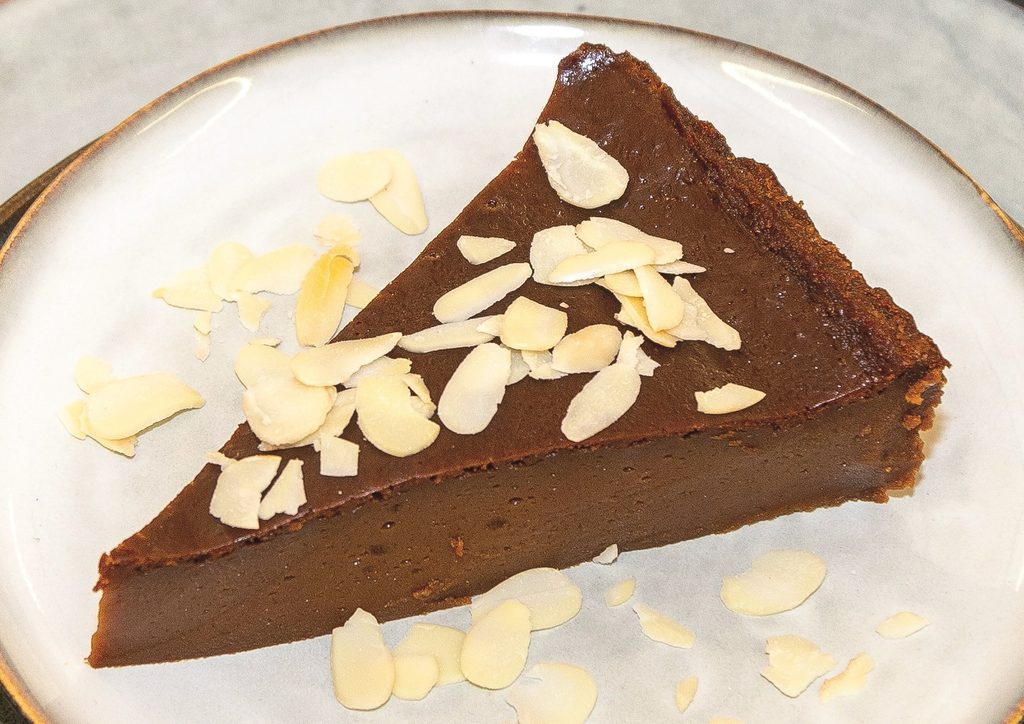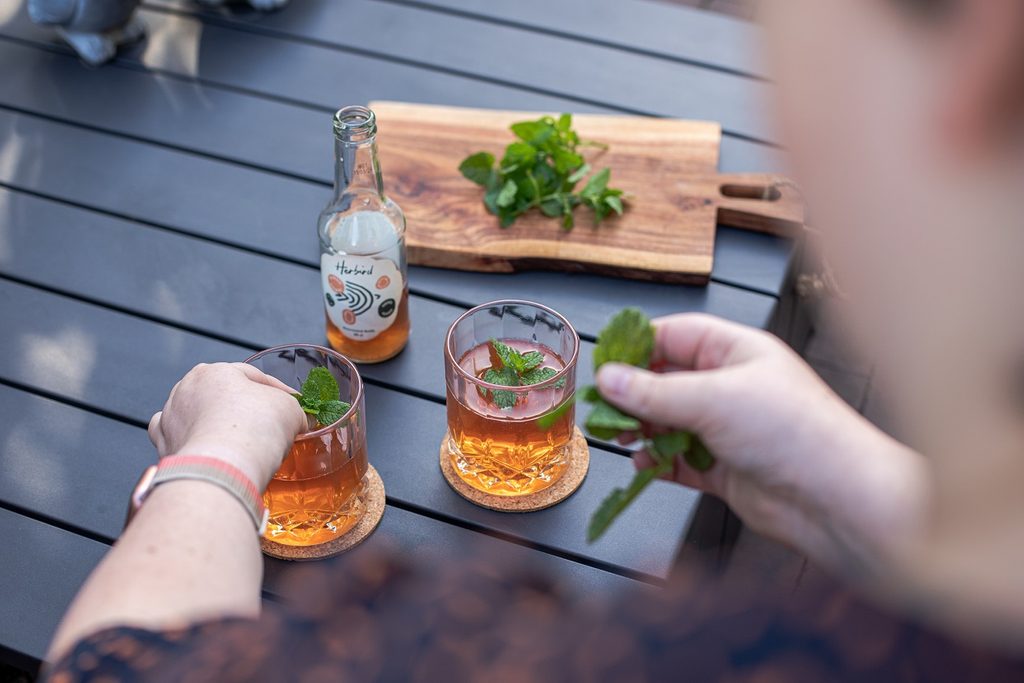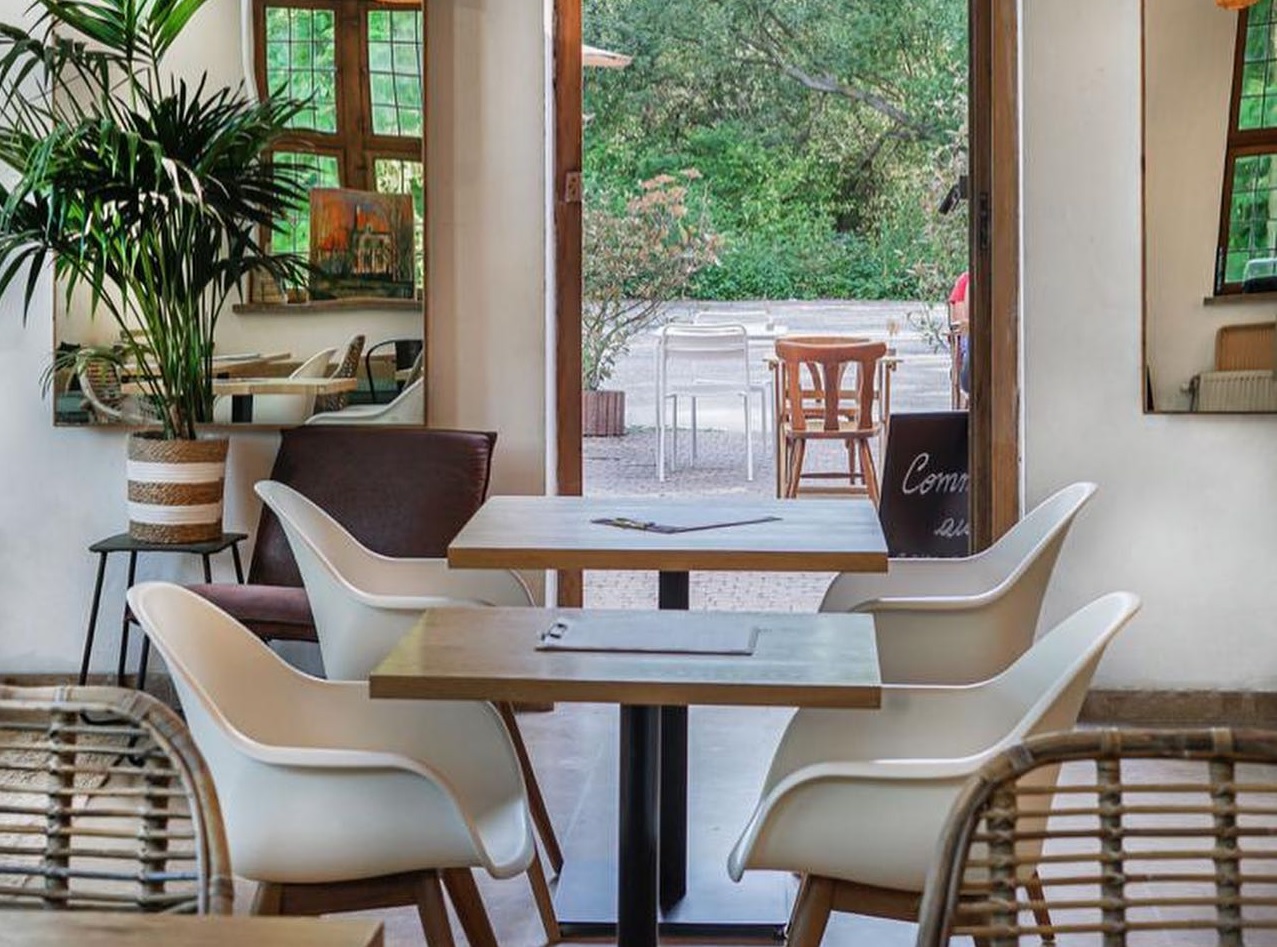What are the most delicious foods, refreshing drinks, coolest cafés and intriguing restaurants in Brussels at the moment?
Restaurant: Tram Experience
Food was, with good reason, a key element of Belgium’s Add food to Belgium’s characteristic quirkiness and you get Tram Experience, a restaurant in a moving tram that can host 36 happy few nightly.
This is a perfect fusion between an urban experience and haute cuisine.
However, there are some caveats. You can only book tables for two or four; the seats are as comfortable as tram seats can be; the dinner/journey is a bit bumpy and noisy (no music, though); there is no coffee at the end (technically impossible); and toilets are airplane-like. And, yes, the meal is created by a renowned chef (including signature dishes), but it is cooked beforehand by an excellent caterer, then cautiously assembled and warmed in the small kitchen of the tram.
Having said that, the experience is well worth the price. Everything is done to make it unique and tasty. The service is very professional with a touch of Brusselitude, i.e. you quickly sympathise with the staff during the two-and-a-half hour journey. Cloth napkins, porcelain plates and fine mises en bouche remind you that the dinner is indeed premium.
And it is! The six-course (€105pp during the week) or seven-course (€130pp during the weekend) dinner follows seasonal themes, with the chefs changing every six weeks: from September until mid-October, it is overseen by Senzanome’s Giovanni Bruno, and from mid-October to end-November, it is Montreal-based Bocuse d’Or finalist Samuel Sirois.
The wine pairing included is perfect. Plus, unlimited water, which is unusual in Belgium. And finally, let’s not forget the digestif, a liqueur from top-of-the-notch Belgian distiller Biercée, to finish on a sweet note.
The journey starts and ends in Place Poelaert, taking diners through the south-west, past some foodie spots such as Vanessa Renard chocolates, Capoue, Hop!, Barat bakery, BBP taproom, Brasserie des Étangs Mellaerts and Au Suisse, to name a few.
Longer summer days make for great sightseeing and even provide unexpected opportunities to interact with people in the streets through the window! In the winter, on the other hand, you will realise that Brussels by night is a buoyant city.
From September until next June, Tram Experience is one of the best ways to visit Brussels and discover what makes this city so great: dense urban areas full of shops and bustling social spaces, beautiful architecture and immense green areas everywhere. And, of course, great food!
Booking compulsory (be patient!): www.visit.brussels/en/visitors/where-to-eat/tram-experience
Food: Flan de Gand
You cannot pretend to know Flanders without having tried one of their oldest food specialties: the vlaai, or pastry flan.
Created in the 16th century, you can actually spot the vlaai in some of Breughel’s paintings. In his time, few people had ovens, so they were mostly cooked by bakers.
The particularity of this dessert is the multitude of regional variances. Like its cousin, the Brussels’ bodding, the vlaai’s common denominator is the use of spices (cinnamon being a favourite) and an ingredient: fruit in Limburg, breadcrumbs in Liers, pudding in Hoegaarden, mastellen (small cinnamon breads) in Aalst and Ninove, and gingerbread with speculoos in Ghent. And, they come in different shapes: pie, pudding or cake.
Cue Flan de Gand, a ready-to-make flan powder which could the boost reputation of vlaai well beyond Flanders.
Creator Pieter Geers says he is reviving his grandmother’s basic vlaai recipe. Indeed, it is so simple that I made it myself. All you need to do is mix half a litre of boiling water with the powder blend, beat it mixture for one minute, letting it rest for five minutes and beating (or blending) it again for one minute before pouring it into a rectangular oven dish and baking it for half an hour. That’s it!
The only constraint is that the oven dish should be 12cm by 19cm, an important detail to guarantee a 3.5cm thick brown pudding with a perfect texture.
All ingredients come from East Flanders, the birthplace of the authentic Gent vlaai. The first dry custard powder mix Breughel mix contains gingerbread and speculoos and is therefore high in cinnamon and sugar. It was also tested by Flemish friends who confirmed the feeling of being sent back in time to their grandmother’s glorious past.
The next blend to come in autumn will include orange zests. Both will be available in illustrated tin boxes containing two mix packages. For us lazy bakers, Pieter even delivers freshly baked vlaai directly to your doorstep if you live in the Ghent region. In the Brussels region, it is available in the major supermarkets, as well as online at flandegand.be.
The drink: Herbird
Do you remember why you ever drank ginger ale? You were probably looking for a slightly sweet, non-alcoholic soft drink, but more neutral than the mainstream sodas. And it was invariably Canada Dry.
But ginger ale is about to face a challenge: a Belgian competitor. Start-up soda brand Herbird, was set up during the Covid lockdown by a Flemish foodie couple, Eldrid and Kevin Vindevogel.
“We searched in bars for interesting drinks to have after a glass of wine and not to be disappointed by the intensity of taste,” Kevin explains. “We wanted a not-too-sweet drink, with some acidity and complex taste, something most places don’t offer.”
Their focus of the bubbly orange drink in the little glass bottles is on ‘delight’ rather than ‘thirst’. “We chose apple as a base to give some sweetness and rhubarb to contrast with some acidity as a local twist on citrus. Then we layered this with some herbs like elderflower and mint, finishing it all off with some bubbles,” Eldrid adds.
The result is an astonishing balance for a not-so-sweet drink. I suggest you drink it on the rocks, and for an extra sprinkle of fabulous you can even garnish the drink with an apple slice, mint leaf, a strawberry and/or a rhubarb stalk.
Herbird can be bought at herbird.be, at De Keyzer Drinks and Cora Woluwe.
The café: Le Slot
It’s always great to have a drink in a place with history. Slot was originally built in the 16th century and was the residence of lords of Woluwe and other elite families. It was converted into a farm in the mid-19th century, but was abandoned in the late 1950s. The municipality bought it in 1975, renovated it and listed it, but after being used by restaurant chain Colmar until 2017, it was abandoned again.
Enter Kevin Daver and Laurie Deboelpaep, who renovated it again before opening it again earlier this year as both a café and a shop.
At Le Slot, you can find many premium products: bread from Levain, meat from Coprosain and cheese from Altitude 150 and Ferme du Gros-Chêne, but also various products such as Eugene chocolate spreads, Smile kombucha, Gili soft drinks, honey and oil. Everything is organic. As Kevin also works at the organic grocer Ferme des Peupliers, Le Slot sells their products in the second room, as well.
The beer list is astonishing: you can enjoy the range of CoHop, a local craft beer cooperative gathering four breweries, Brasserie Witloof, DrinkThatBeer and Janine (a baker-brewer) and 1B2T.
The café itself serves a menu of the day at lunchtime (one-plate dishes and desserts). Their huge terrace is surrounded by trees, which conveniently blocks the cars on Boulevard de la Woluwe from view (although you can hear them a bit). The shop/grocer is accessible by car but also by a path in the forest along the Woluwe, the local river. Quite literally a hidden gem.
Le Slot 71, Boulevard de la Woluwe, 1200 Woluwe-Saint-Lambert





